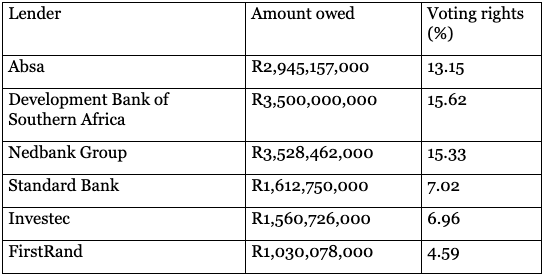The SAA business rescue proceedings have hit a snag that will further delay its conclusion as a crucial creditors’ meeting – aimed at voting for a plan to restructure the troubled airline – has been postponed to July.
A meeting with creditors to either approve or reject the SAA final business rescue plan proceeded on Thursday 25 June. But some SAA creditors and trade unions representing the airline’s workers tabled a proposal at the meeting to postpone a vote for the rescue plan to 14 July.
The National Union of Metalworkers of SA, SA Cabin Crew Association, and South African Airways Pilots Association, which in a coalition are the majority union, raised objections on proceeding with a vote, saying the rescue plan contravenes labour laws.
This is another twist in the serially delayed SAA rescue proceedings, which have been ongoing for nearly seven months. According to the Companies Act, which provides for business rescue proceedings in SA, such proceedings should ideally last for three months.
The SAA business rescue practitioners, Siviwe Dongwana and Les Matuson, cannot afford further delays. If there are further objections to the rescue plan, which would impact its approval, Dongwana and Matuson are required by the Companies Act to declare that SAA has no reasonable prospects of being rescued and place the airline under liquidation, which implies its death.
Aggrieved unions
The three trade unions have taken umbrage at, among other things, allegedly not being consulted on the possible retrenchment of 3,700 SAA workers that the rescue plan proposes. This aspect of the rescue plan, they said, contravenes the Labour Relations Act.
The rescue plan has proposed the launch of a restructured and new SAA, which will initially have a reduced workforce of 1,000 and later 2,900 workers – once it operates a full flight schedule of domestic, regional, and international routes from 2021.
“Unfortunately, we cannot support the business rescue plan in its current form… It has little chance of launching a new SAA and appears to target labour, which is the worst affected due to the loss of jobs,” said a representative of the three unions at the creditors’ meeting.
Power of commercial banks
The postponement of the creditors’ meeting to 14 July was voted in favour by 69% of SAA creditors. This means that Dongwana and Matuson will have to kick-start discussions with aggrieved trade unions and other affected SAA parties to address their concerns before the next creditors’ meeting.
It is unclear if lenders, who are SAA’s largest creditors, voted in favour of the postponement. Lenders – including the Development Bank of Southern Africa (R3.5-billion), Nedbank (R3.5-billion), Absa (owed R2.9-billion by SAA), Standard Bank (R1.6-billion), Investec (R1.6-billion) and FirstRand (R1-billion) – have enormous voting power for any proposal during a meeting of creditors. In other words, the aforementioned lenders, which have a combined voting power of more than 60%, have the muscle to either vote in favour or against proposals.

Source: Business rescue practitioners.
Lenders are in a far better position than other creditors to be paid money and interest owed, which amounts to about R16.4-billion. The rescue plan proposes paying lenders in full because their loans to SAA are guaranteed by the government or the taxpayer. The rest of the concurrent creditors, whose debt is not guaranteed by the government, won’t receive full payments as they stand to get 7.5 cents in the rand.
Some concurrent creditors, including SA Airlink, which is owed about R770-million by SAA for outstanding ticket sales, are against the final rescue plan, saying it disproportionately benefits lenders rather than other creditors.
Crucially, the next creditors’ meeting (14 July) is one day before a deadline set by Dongwana and Matuson for the government to indicate whether it will provide further funding to SAA. By 15 July, Dongwana and Matuson want a letter from the Department of Public Enterprises, concurred by the National Treasury, indicating that it will fund SAA’s funding requirements proposed by the rescue plan.
The rescue plan has proposed R10.4-billion in new funding from the government to settle SAA’s historical debt and provide it with start-up capital.
If the deadline is not met by the government, Dongwana and Matuson will render the rescue plan “unimplementable” and suspend business rescue proceedings, paving the way for liquidation proceedings.
Given deteriorating public finances, the government doesn’t have fiscal room to recapitalise SAA over and above the R20-billion in successive bailouts the airline has received over the past six years. DM/BM

















